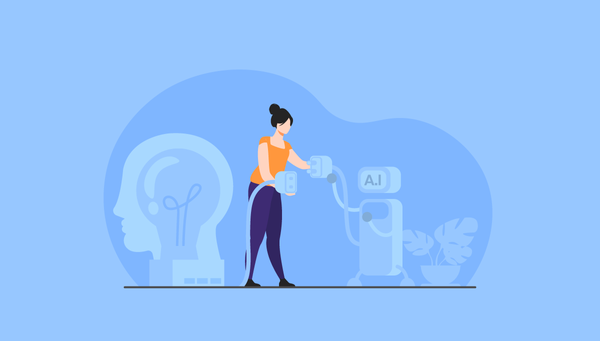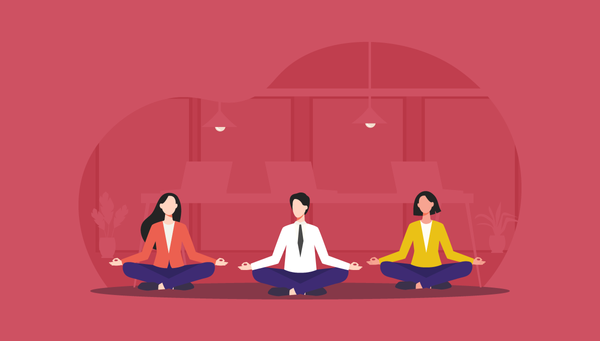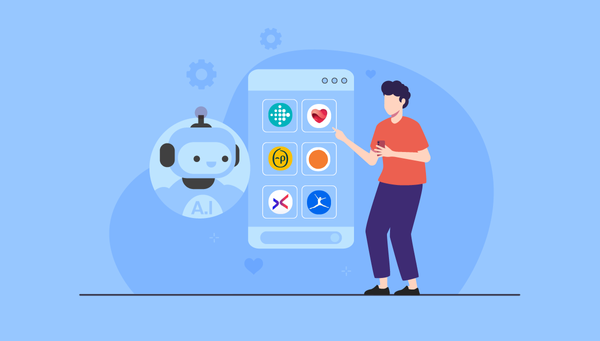8 Workplace Wellness Ideas to Combat the Psychological Effects of Working Night Shift
Employee Health and Corporate Wellness are synonymous and have gained increased attention recently. Yet, it is not unusual for a few employees to receive less care than their well-attended counterparts. It is most prevalent among those who find themselves working a night shift.
Technological advances and globalization are the key elements driving the need for different work shifts. Businesses operate at night to meet the 24-hour consumer demand. According to recent estimates, shift work is performed by 15 to 30 percent of the European and American workforce.
The 4 Main Psychological Effects of Working Night Shifts

Night-shift work affects individuals at the biological level. Such individuals have a higher risk of mental health and mood disorders. Being on a nocturnal work schedule can also disrupt circadian rhythms and result in sleep deprivation.
Circadian rhythms are 24-hour cycles. They function in the background of the body's internal clock to carry out critical tasks and processes. The sleep-wake cycle is one of the most significant and well-known circadian rhythms.
Sleep disorders contribute to increased stress hormones, increased hunger or cravings, and diminished satiety signals leading to poor eating habits. They also induce fatigue among night shift workers.
The night shift requires you to train your body to sleep during the day and stay awake at night. But, if this reconditioning is not done, you may develop major medical problems.
Here are some of the psychological consequences of working night shifts -
1. Interferes with the Natural Sleep-Wake Cycle

Night shifts lead the body to fight its natural circadian rhythms by attempting to remain aware of when it is supposed to be sleeping. When you return home from a night shift, your internal body clock and midday light exposure signal you to be up and active.
During the day, your retinas detect sunshine and signal the brain to release hormones. These include cortisol, which keeps you awake and energized. As the sun sets and the light diminishes, your brain creates melatonin. This hormone stimulates feelings of tiredness and calmness.
Insomnia, excessive tiredness or both are indications of sleep disorders. They afflict persons whose work hours coincide with regular sleep time. Insomnia may be defined as the inability to fall asleep or to wake up before getting adequate sleep.
Natural light and darkness have an important role in regulating circadian rhythms. Insomnia can result in higher levels of absenteeism and decreased employee retention rates.
2. Increases Risk of Depression

Those who work the night shift are out of alignment with their biological rhythm, causing what the researchers call social jetlag.
Our circadian rhythm also helps dictate the timing and release of important hormones. Social jetlag can cause dysfunction in our brain chemistry, triggering depressive symptoms.
Vitamin D deficiency can also be linked to depression. It is because night workers rarely get quality time in the sunlight.
Depression may express itself differently from person to person. Across the spectrum of depression diagnoses, most people will experience some form of the following symptoms, such as
- Persistent sadness
- Feelings of hopelessness, pessimism, guilt, worthlessness, or emptiness
- Difficulty concentrating
- Difficulty sleeping
- Changes in appetite and weight gain/loss
- Impaired memory and decision making
- Loss of motivation to do things you enjoy
- Irritability
- Physical symptoms include headaches, fatigue, digestive issues, cramps, etc.
- Suicidal Thoughts
3. Increases Risk of Workplace Injury
Workplace injury is one of the psychological consequences of working the night shift. Working at night requires going against your body's natural tendency to shut down vital processes, which include awareness and movement.
You can force yourself to stay up and be active. But your body still wants to sleep, reducing concentration, attention, productivity, and fine motor abilities.
Why is there a greater risk at night? There are two probable reasons. Worker tiredness due to sleep disruption or long work hours is one. Less monitoring and coworker help are another.
4. Impairs Cognitive Ability
The psychological effects of working the night shift include deteriorating memory. Slower mental processing speed is another such effect.
Cognition handles how humans perceive, remember, talk, think, make decisions, and solve issues. As a result, lack of good sleep negatively impacts employees' cognitive efficiency.
Cognitive impairment in older adults has a variety of possible causes. Depression; and dementia are two pathological disorders that share most of the currently recognized risk factors.
8 Workplace Wellness Ideas to combat the Psychological Effects of Working Night Shifts

With many dangers associated with shift work, night shift employees should be the last group to be overlooked in a wellness program. The goal of this program should be to recognize and help people with unhealthy patterns improve. But, there are several drawbacks to working the night shift.
Most businesses have more workers working throughout the day. And that makes "daytime" activities a more sensible alternative. Even when events are provided, night shift employees on specified shifts may be unable to attend them.
As a result, it is crucial to offer various options and alternatives. That will allow night shift employees to engage in activities as comfortably and conveniently as possible.
So, how can my organization keep functioning while still caring for my employees' health and well-being?
We're delighted you asked!
We've compiled a list of best practices for ensuring a happy, healthy, and productive night shift workforce
1. Catch Them on Their Way In
In many circumstances, night shift employees arrive at work about the time the day shift leaves. Holding events or activities during this "in-between" period (between 4 p.m. and 6 p.m.) might be a great way to reach both day and night-shift employees.
Challenges to Consider- Many people will be reluctant to arrive at work early, even for employee engagement activities. And some employees will not want to stay late for a special occasion. The attendance from both shifts could be lower than you would expect.
2. Allow Flexible Scheduling

Dividing tasks according to strengths is an excellent strategy to boost employee productivity. It will help them concentrate and handle challenging situations.
It ensures that your employees execute tedious tasks at the start. Especially those that demand the greatest attention and expertise. Night workers often have the most tiredness between 3 and 5 a.m.
Flexibility is an unmatched benefit for almost 66 percent of shift workers. It allows them to schedule their personal lives. Accordingly, you can find out if someone is normally a night owl and wants to work the graveyard shift. It will result in greater productivity and better health. Since most employees will be able to work according to their natural clocks.
Encourage your employees who are tired after a long night shift not to drive home. If you can't arrange transport or accommodation for the late-night workers, ensure they have someone to pick them up after work.
Challenges to consider- Allowing flexible scheduling can complicate communications between team members and may delay client deliveries.
3. Mirror Day Shift Events

For your night shift employees, you can look at the option of simply mirroring the activities. For example, if you have a Lunch & Learn or Workplace Yoga session during the day shift, hold a "night shift" session between 9 – 10 p.m.
Challenges to Consider- You'll need administration during the night session. In the example of Lunch & Learn, you would need to find a wellness coordinator willing to come in at night.
4. Carry Out Frequent Employee Health Checks
Enable your workers to discuss their health-related concerns, especially if their issues impact work duties. Nominate a wellness coordinator who acts as the workers’ advocate and encourages individuals to talk it out instead of bottling up their concerns.
Moreover, conduct frequent health check-ups for your employees to ensure their well-being. They may also find it therapeutic to speak to an impartial or an external health expert.
Challenges to Consider- Some employees may resist the prescribed lifestyle changes. It may result in underutilizing the resources for which the company has to incur losses.
5. Offer Individual Wellness Options

Not every aspect of a wellness program must be a great show or event. You should provide a range of possibilities. Personal step goals, dietary goals, mindfulness objectives, sleep meditations, financial goals, and so on do not need to be connected to an event. These tiny goals can be controlled and handled by the employee.
You can include an all-in-one fitness tracking app in your employee wellness program, such as Vantage Fit. Vantage Fit not only promotes a healthy lifestyle but also encourages employee engagement. It consists of various in-app tasks and weekly challenges. Completing these challenges allow employees to earn points. These points can be exchanged for certain corporate benefits and discounts.
Challenges to Consider- If your night program has no activities, your staff will be unhappy if they see the day shift employees enjoying many "fun" things. At the same time, they are confined to personal challenges and goals.
Even with slight differences, there should be two-sided programs for the day and night employees to feel equally valued.
6. Promote Healthy Eating

Even when an individual is awake all night, the body reacts well to keeping the typical daytime pattern. Encourage staff to eat at the start or conclusion of their shifts and limit their food intake between midnight and 6 A.M.
Eating 'breakfast' towards the end of a shift will also aid in better sleep during the day by keeping people from waking up hungry. Employees should attempt to have three regular meals daily rather than eating all night.
If workers are on site between shifts, ensure there is room to eat, rest, and socialize away from their typical workstations.
Encourage a nutritious, well-balanced diet. Instead of expecting night shift employees to rely on late-night fast foods, employers might consider offering healthy snacks or access to balanced meals.
Challenges to consider- Providing meals to employees can be expensive and tedious, as you have to hire a nutritionist to plan a balanced diet. Also, the employees’ needs may vary according to their fitness routines, and they may not prefer the meals provided at the workplace.
7. Ensure Consistency
Night shift workers may experience eating and sleeping difficulties early in their careers, and inconsistent schedules aggravate such problems. Unpredictable schedules can also cause interpersonal stress for your employees since they may be separated from their children, friends, and partners for days.
As an employer, your role is to schedule shift activities, so everyone gets time off regularly. Also, avoid making abrupt or frequent changes to the duty roster. It will assist your employees in planning personal activities with family and friends and scheduling time with their loved ones.
Once you set their work schedule and agendas, it is best to keep track of your employees' preferences through surveys. Use the surveys to learn about their tolerance levels and find ideal time frames for variance and ambiguity. You can introduce an employee survey and feedback tool to boost employee advocacy and provide transparency.
Challenges to consider- Scheduling rotational shifts among employees might be a difficulty if your organization deals with international clients and functions purely at night.
8. Set and Execute Safety Measures
You may also improve the work environment as an employer by increasing security and safety. It is essential to assist team members in staying focused and alert.
First, ensure that the lighting is bright enough during the night shifts to simulate natural daylight. Second, allowing employees to listen to the radio or music throughout their shift promotes a lively atmosphere. It is critical for isolated or buzzing equipment rooms to have a little human touch.
Allowing employees to listen to the radio or music throughout their shifts promotes a lively atmosphere. Also, ensure room temperature is appropriate, as warmer conditions induce tiredness, and cool air can help employees stay attentive.
Challenges to consider- Music can also be a distraction for the employees and may cause them to become unproductive.
Also, a sudden and extreme change in temperature puts the body under stress as it is forced to adjust from a hot environment to an air-conditioned one.
This temperature change can dry your skin, mucus membrane, and eyes. Many complain of itchy eyes and sneezing as soon as they reach their offices. The possible reason behind this is the temperature change between inside and outside.
Necessary Evil
Working the night shift can be tough on your health, both mentally and physically. However, many jobs require it, so employers need to do what they can to make the shift easier for their employees.
It includes rotating employees from morning to afternoon to night shifts to better adjust to a sleep cycle. It also means taking steps to mitigate the risks of night shift work, which can help reduce long-term health risks.
Employers may limit the negative consequences with careful planning, thought, and two-way communication. It doesn't have to be expensive! Sensible organizations can make night shift work for everyone without jeopardizing health or productivity.




